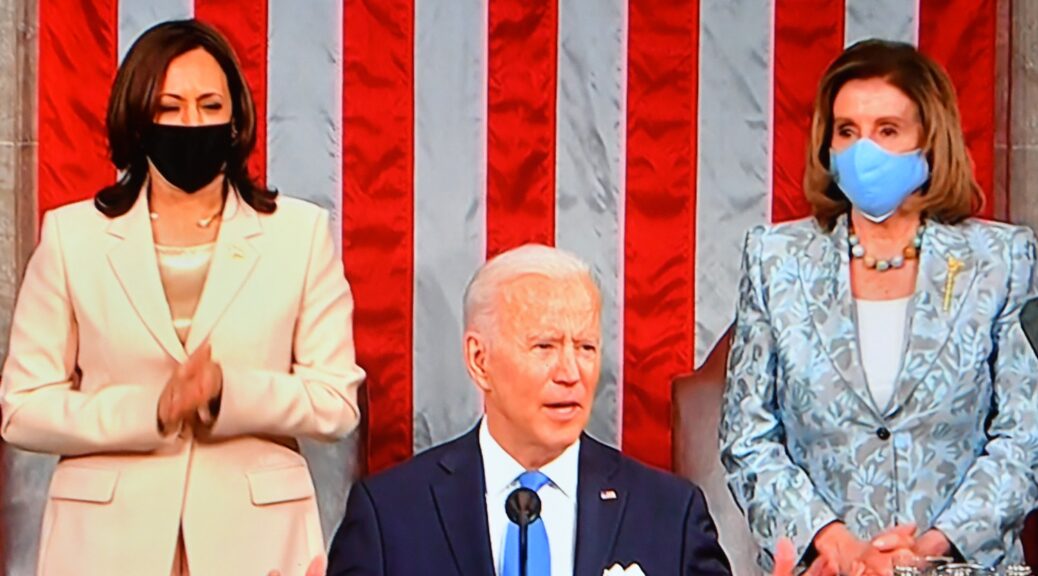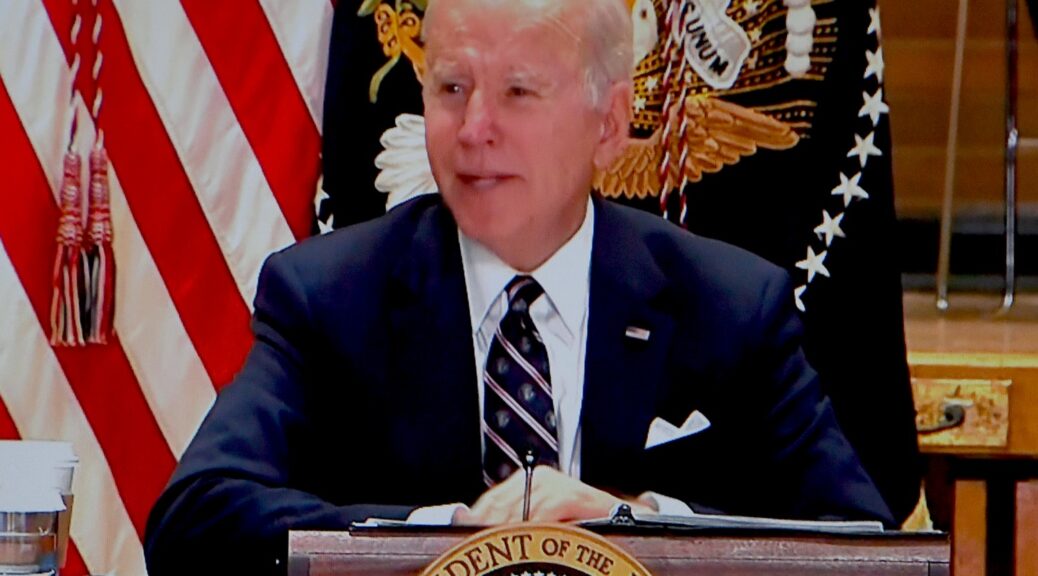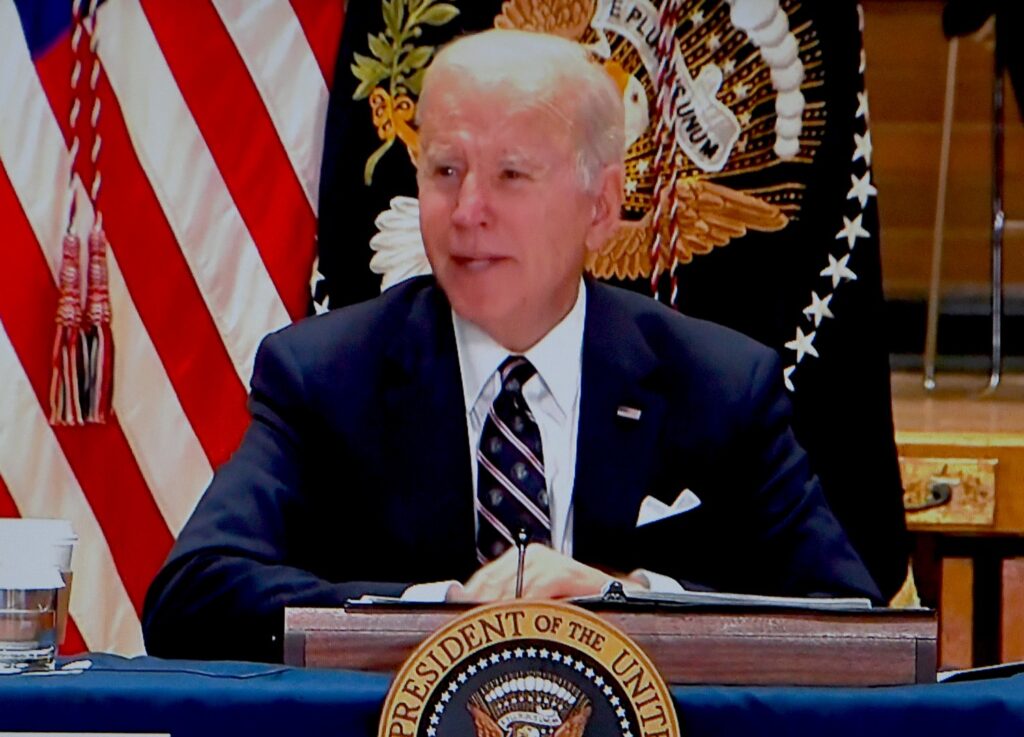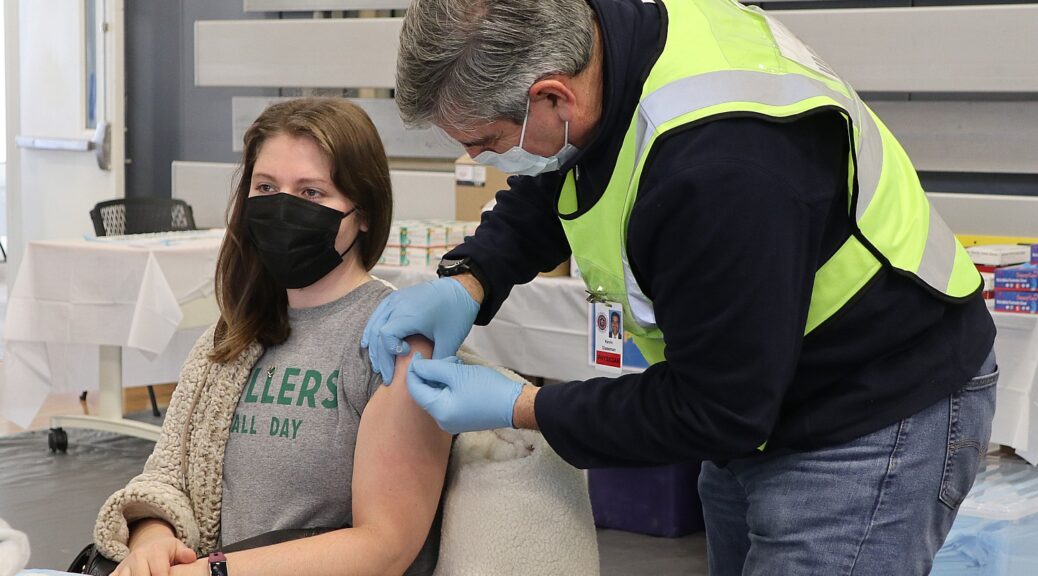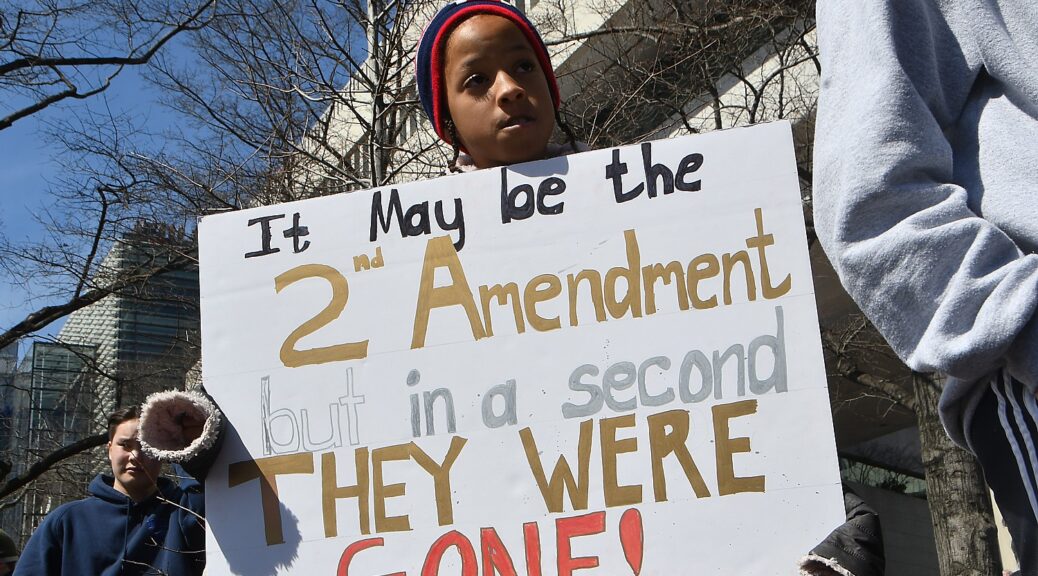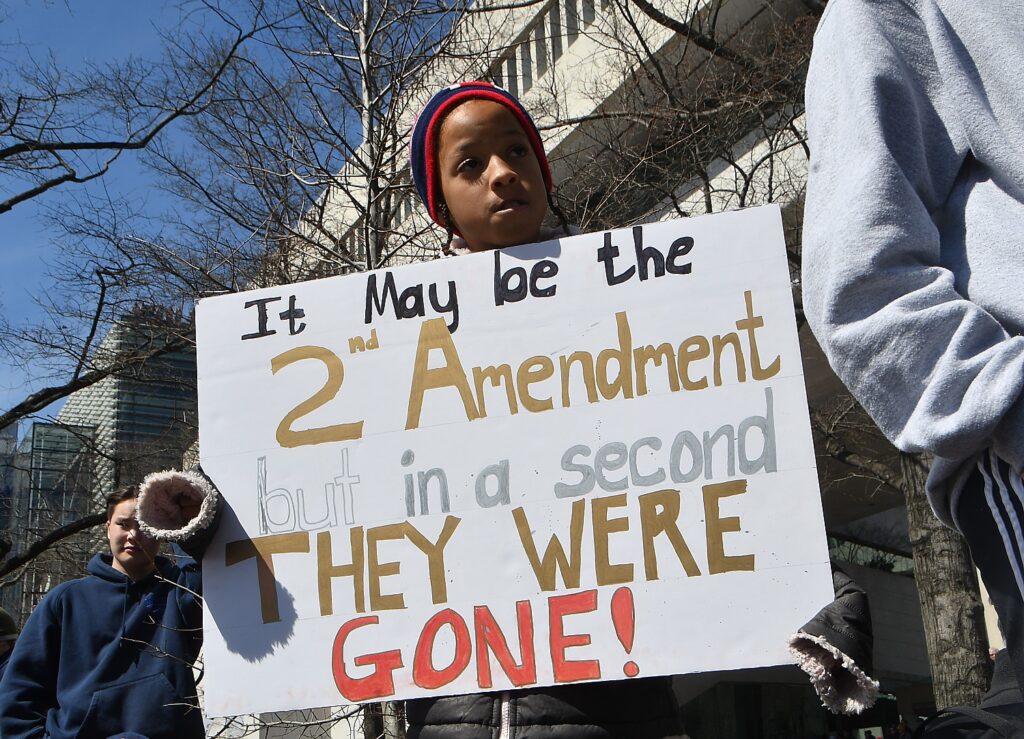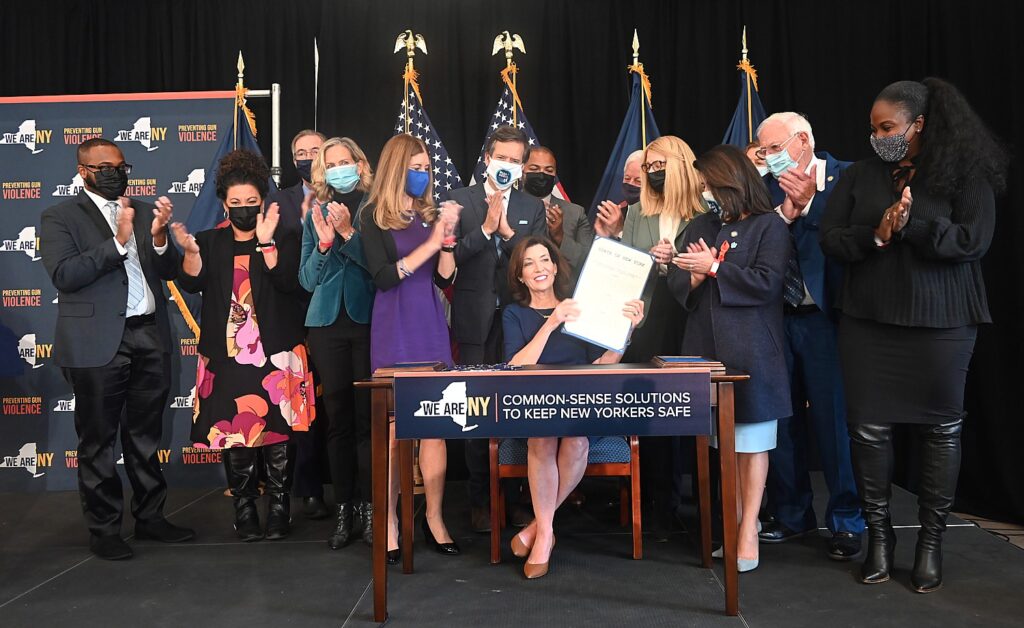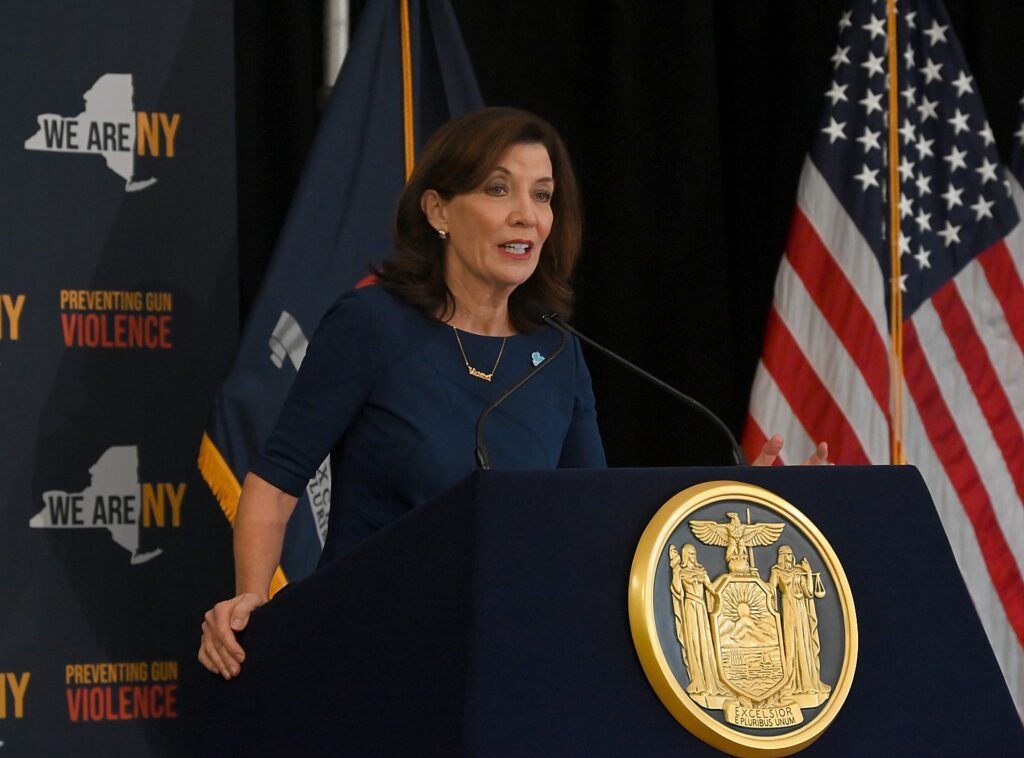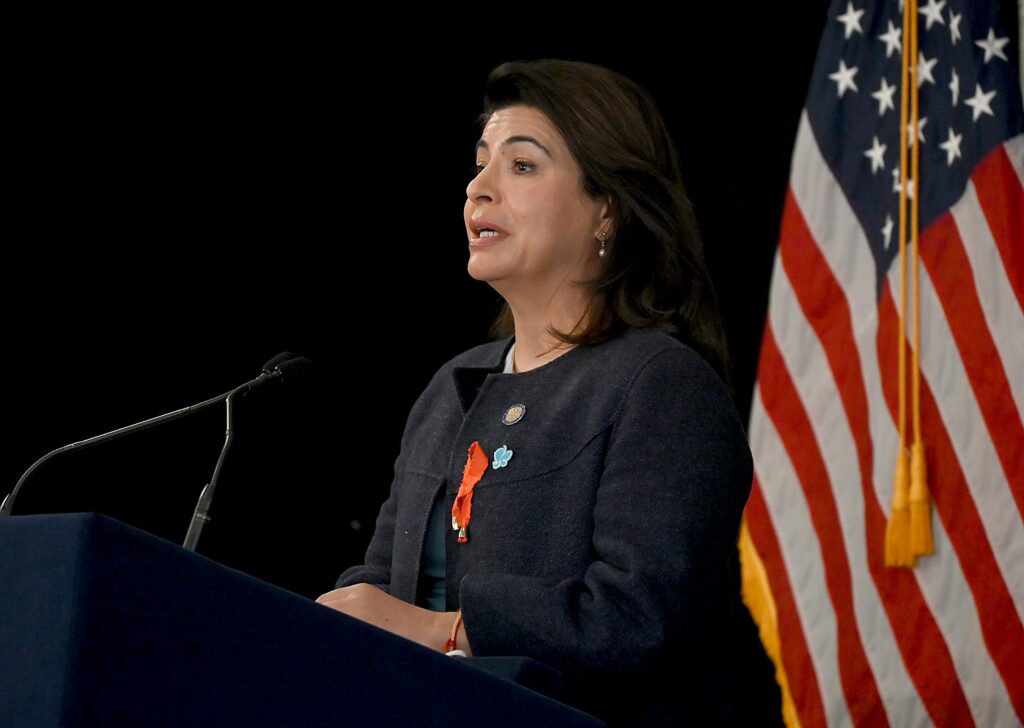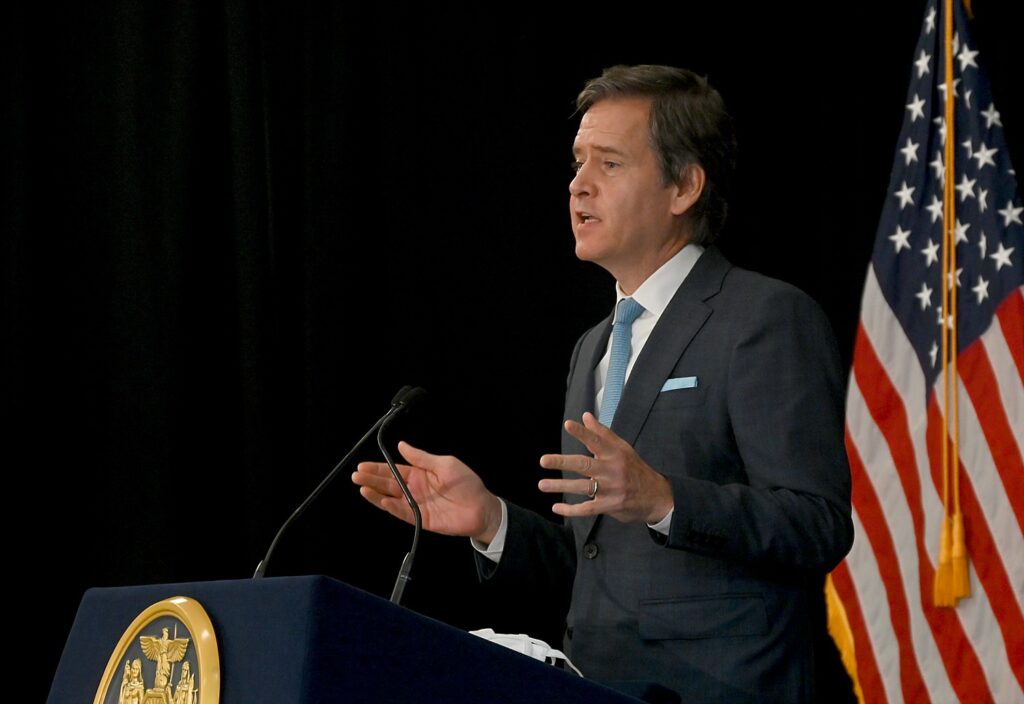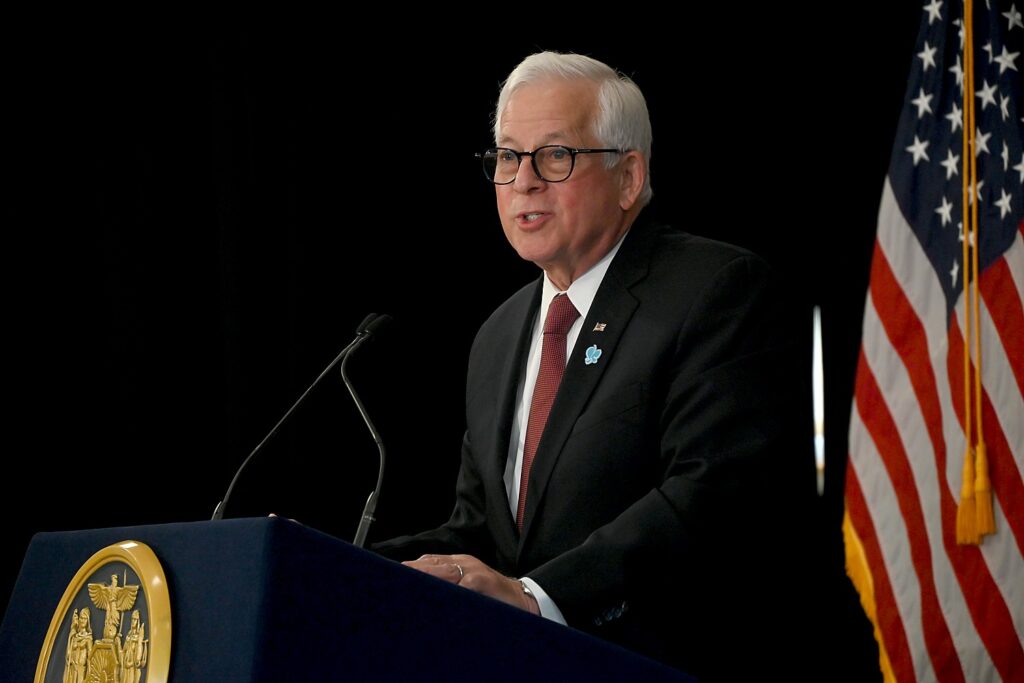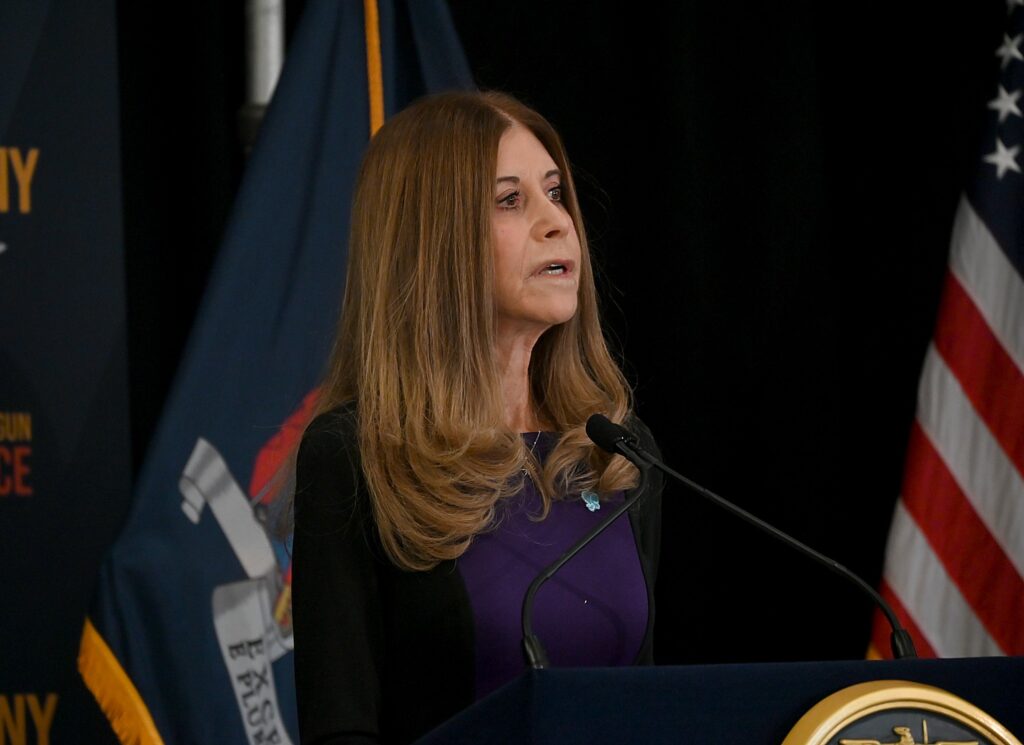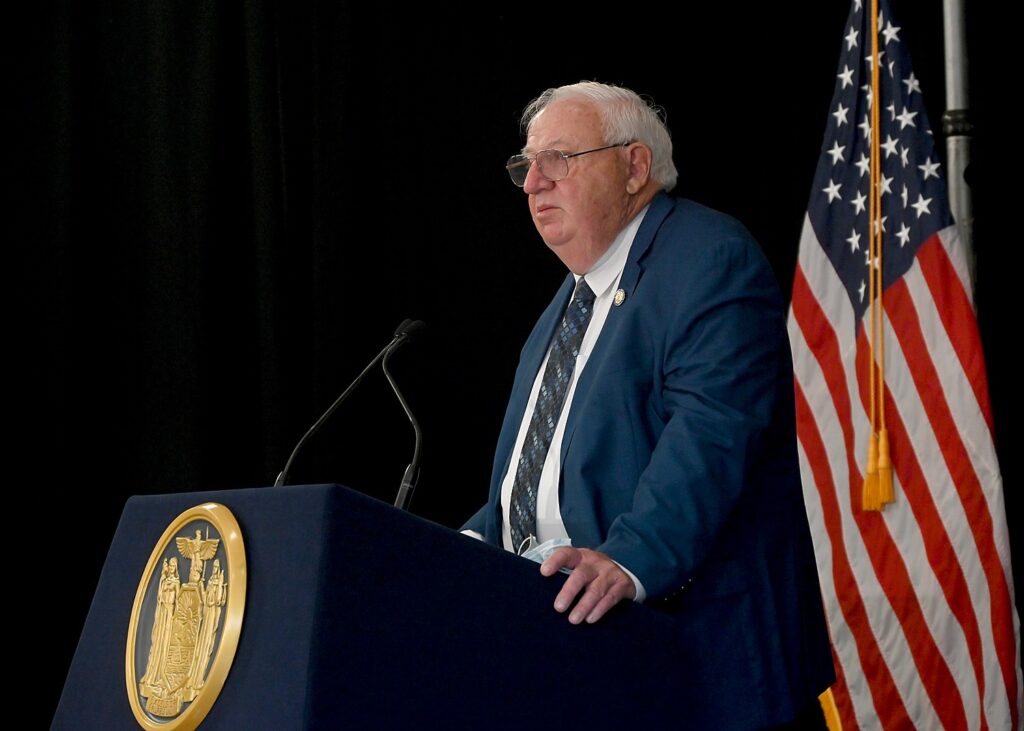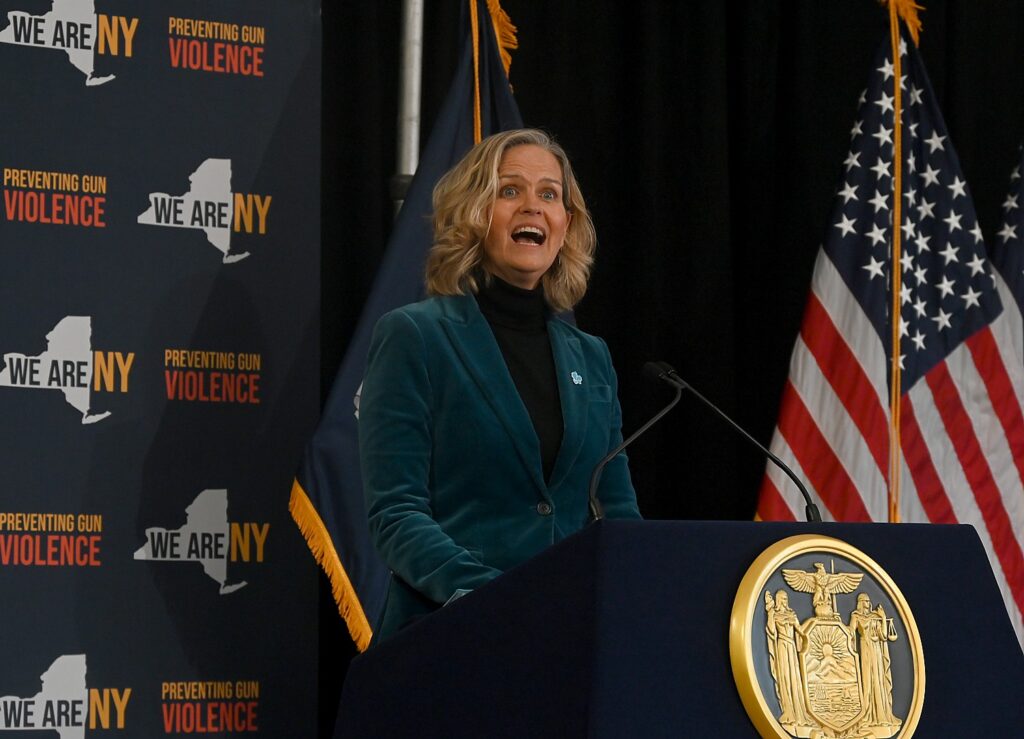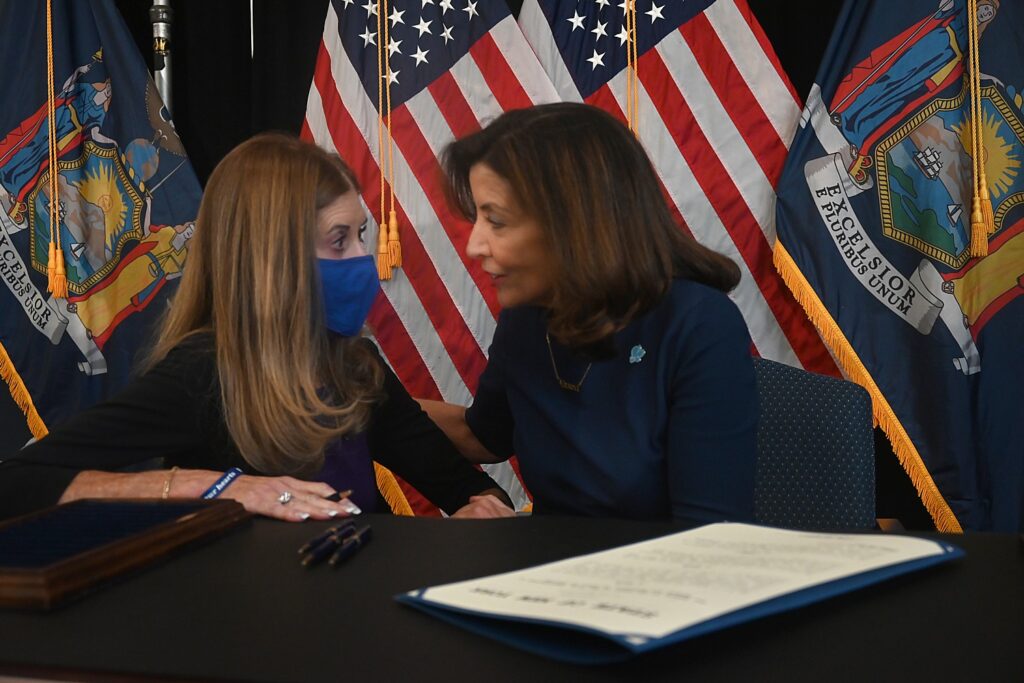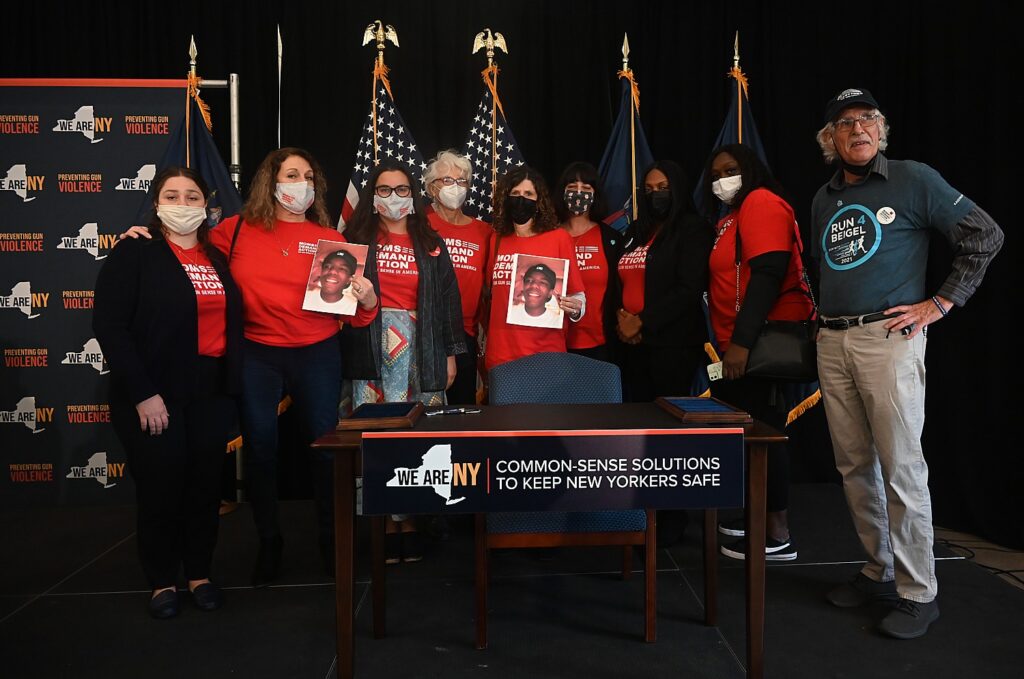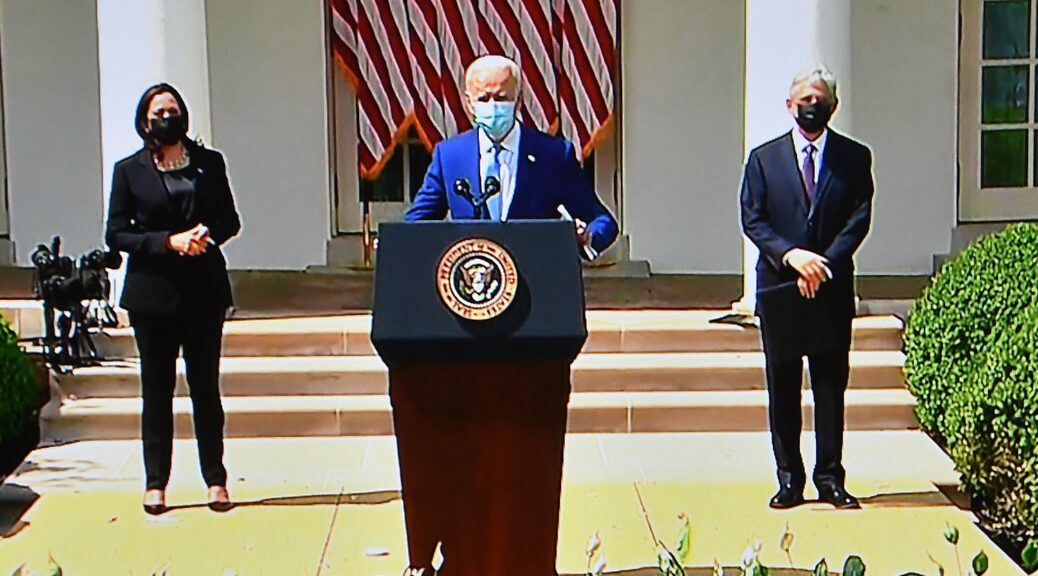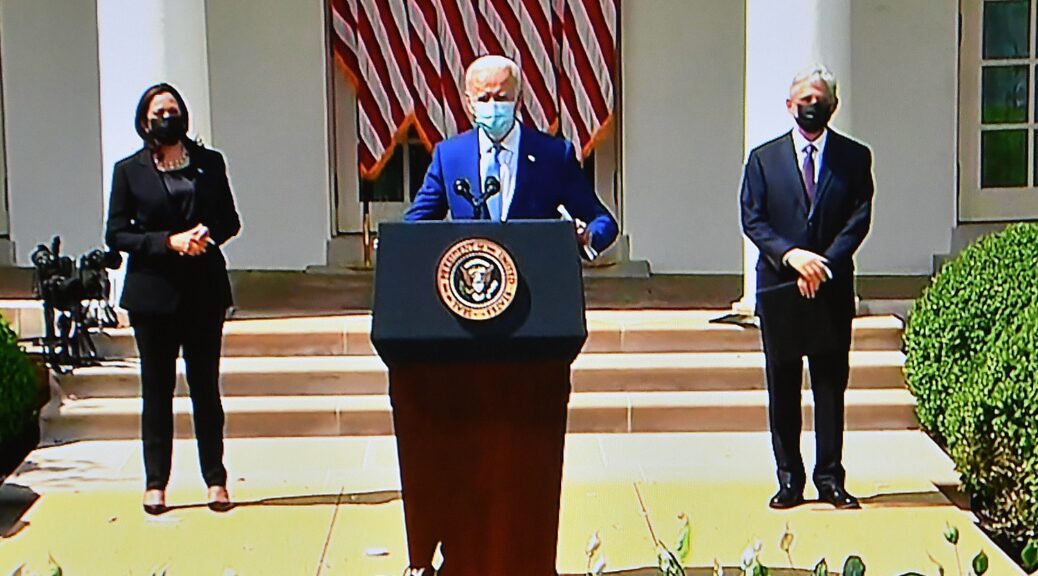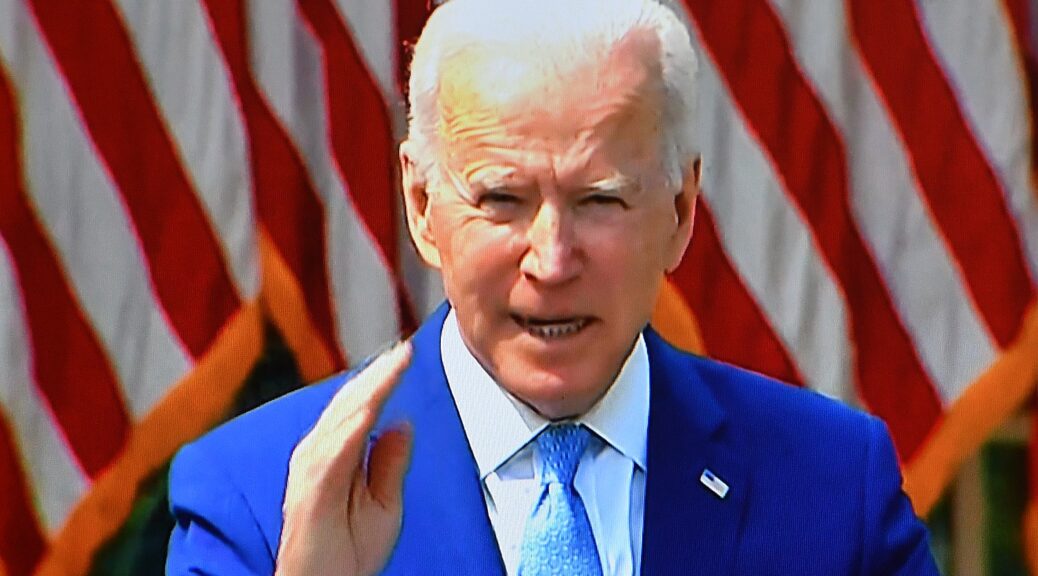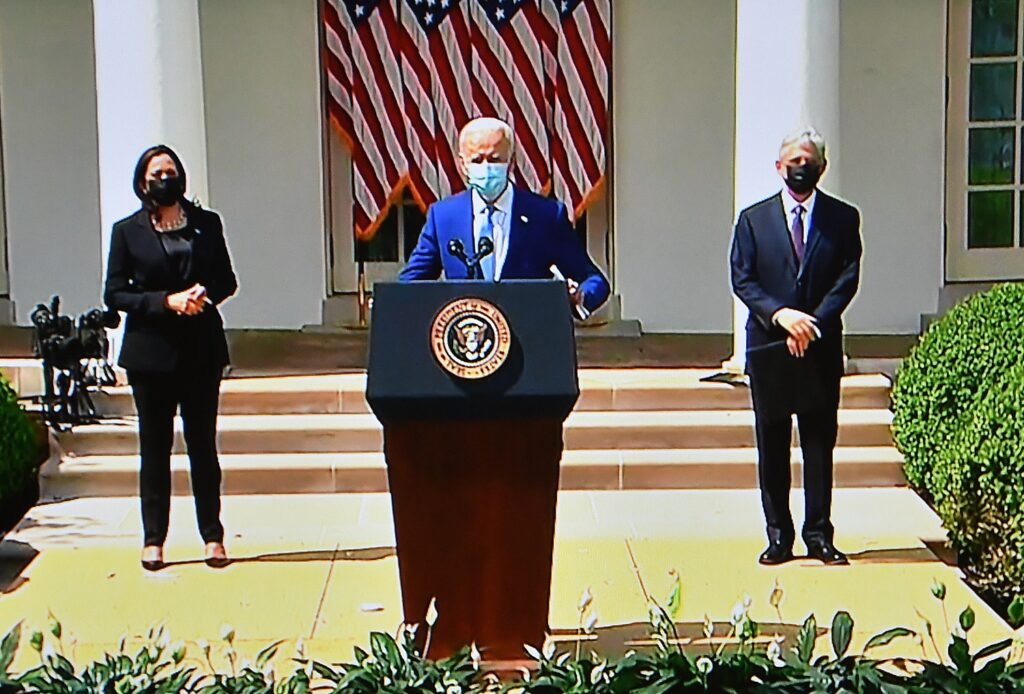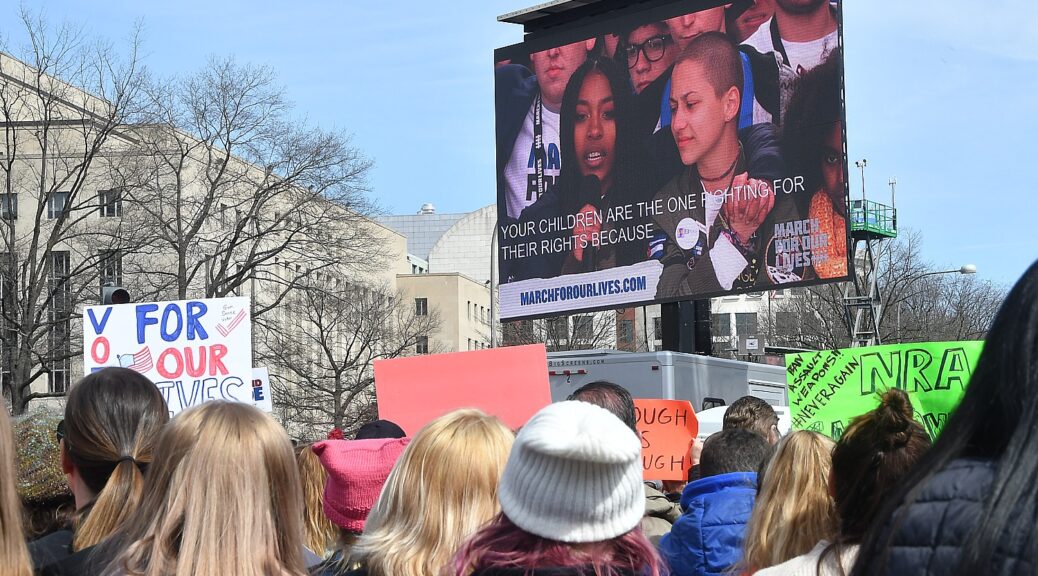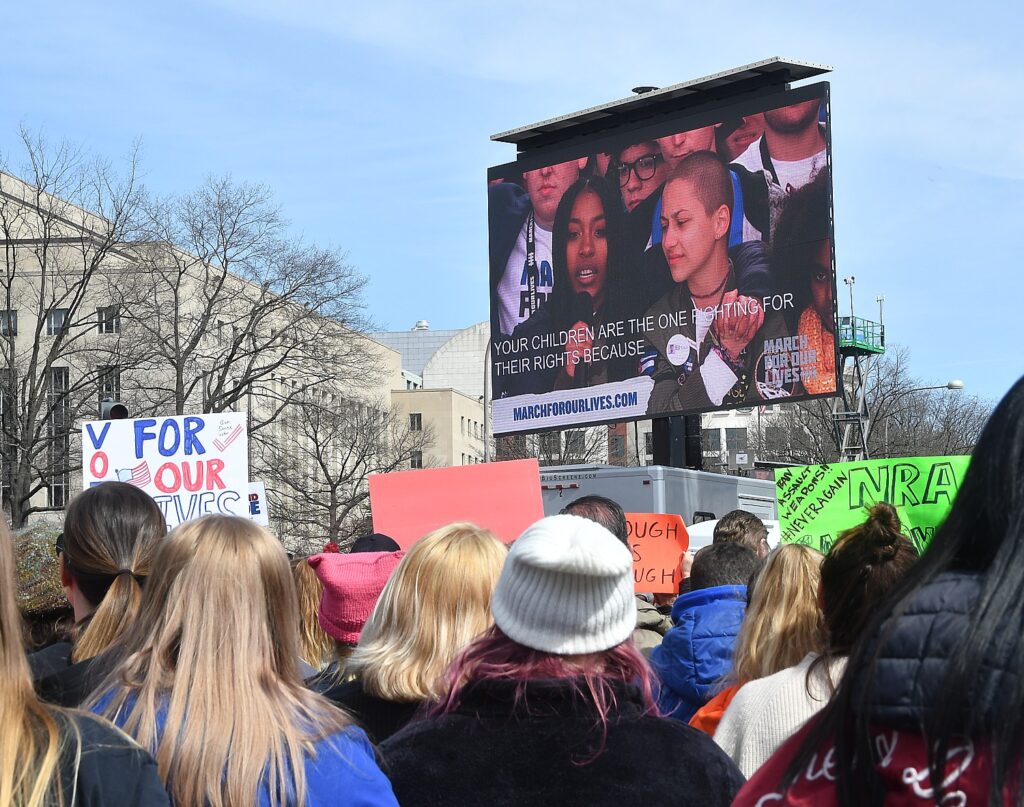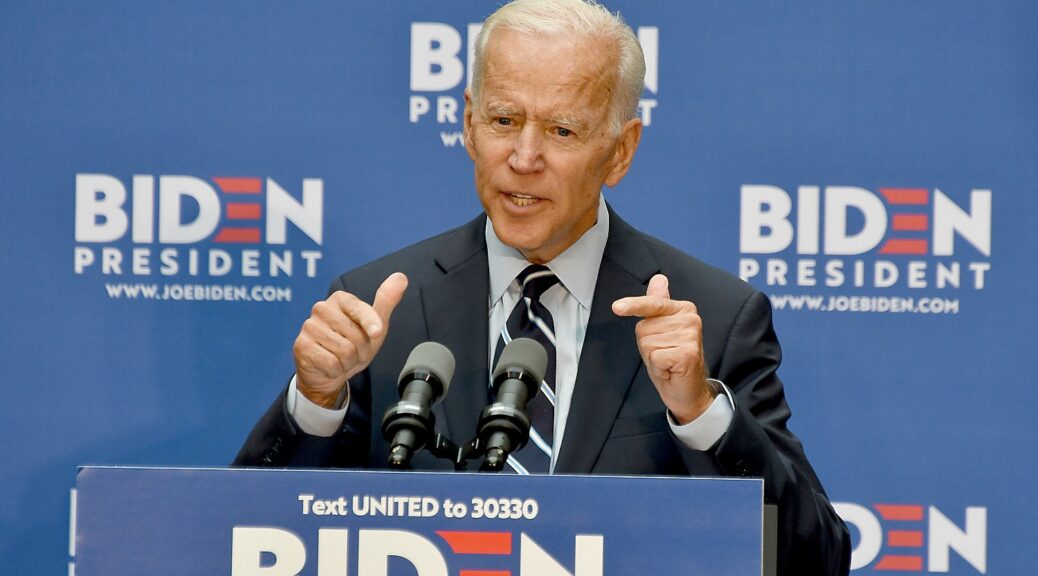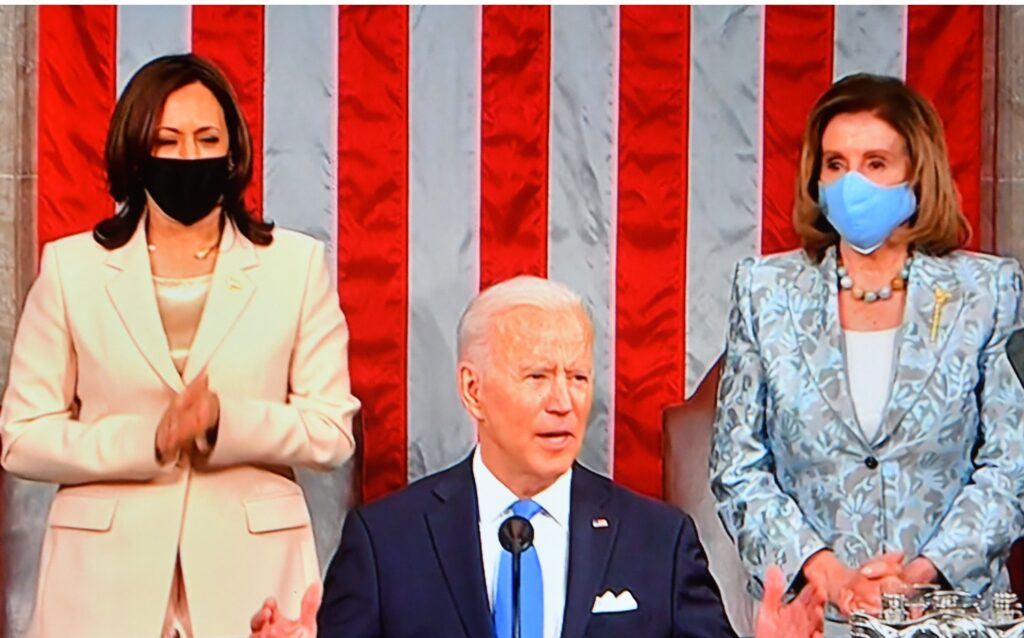
There is simply not enough time or space for President Biden, in his State of the Union address, to provide all the details to the policies he has achieved or will implement. A major issue for the President has been addressing America’s epidemic of gun violence. Here are more details from the White House about President Biden’s historic actions to make our communities safer by reducing gun crime:
In his 2022 State of the Union Address, President Biden will discuss his comprehensive strategy to fight crime by investing in crime prevention and helping cities and towns hire additional community police officers to walk the streets, get to know their neighbors, and restore trust and safety.
He’ll make clear that the answer is not to defund the police, it’s to put more police – with better training and more accountability – out to take back our streets and make our neighborhoods safer. He will describe the steps his Administration has taken – and will continue to take – to advance that accountability and rebuild trust between law enforcement and the communities they serve.
Investing in community-based crime prevention and putting more cops on the beat in community policing are the two foundational policies that then-Senator Biden advanced when the United States faced record crime rates in the 1990s. At that time, he wrote a law to change how our country fights crime. We then experienced the sharpest drop in crime on record.
President Biden has spent his first year in office executing on his five-part comprehensive strategy make our communities safer and reduce the increase in gun crime we’ve seen since the beginning of the pandemic. It builds off the President’s long-held principles by getting tough on gun crime, and making community investments to prevent crime from happening in the first place:
- Stems the flow of firearms used to commit violence, including through tougher federal law enforcement efforts against gun traffickers like our regional DOJ strike forces
- Supports local law enforcement with federal tools and resources to address violent crime and put more cops on the beat, including through record funding in the Rescue Plan
- Invests in evidence-based community violence interventions that are proven to stop disputes from spilling over into gun violence
- Expands summer programming, employment opportunities, and other services and supports for teenagers and young adults
- Helps formerly incarcerated individuals successfully reenter their communities and break the cycle of re-offending
At the same time, President Biden will use the State of the Union Address to reiterate his call for Congress to pass commonsense gun violence legislation that will save lives, and the President continues to urge Congress to act on his budget request of $200 million for community violence interventions and $300 million budget request to more than double the size of the Department of Justice’s COPS community policing hiring grant program.
In his 2022 State of the Union Address, President Biden will highlight how his Administration is executing on his comprehensive strategy to make our communities safer and reduce gun crime. The President’s comprehensive strategy advances two foundational policies – investing in crime prevention and helping cities and towns hire additional community police officers to walk the streets, get to know their neighbors, and restore trust and safety. These are the two foundational policies that then-Senator Biden advanced when the United States faced record crime rates in the 1990s. At that time, he wrote a law to change how our country fights crime. We then experienced the sharpest drop in crime on record.
President Biden recognizes the important role that law enforcement plays in stopping the interstate flow of guns used in crimes and taking off our streets the small number of individuals responsible for a disproportionate amount of gun crimes. To support state and local law enforcement, the U.S. Department of Justice has launched five gun trafficking strike forces and is cracking down on the “Iron Pipeline” – the illegal flow of guns sold in the south, transported up the East Coast, and found at crime scenes in cities from Baltimore to New York City. In addition, the Justice Department has directed every U.S. Attorney’s Office nationwide to increase resources dedicated to district specific violent crime strategies. The Justice Department is working with state and local law enforcement to address the most significant drivers of violence in each district, including to get repeat gun violence offenders off of our streets. New York City’s Gun Violence Strategic Partnership – which the President and Attorney General visited in February 2022 – is one model of the strategies Justice will help expand nationwide.
The President is committed to serving as a strong partner for state and local law enforcement on the frontlines of the fight against crime. That’s why his American Rescue Plan gives cities and states historic levels of funding that they can use to put more cops on the beat for community policing. That’s also why the President continues to urge Congress to act on his $300 million budget request to more than double the size of the Department of Justice’s COPS community policing grant program.
Stronger law enforcement is made more effective when we make real investments in making our communities stronger and in addressing the causes of crime before it spills over into violence. That’s why President Biden’s comprehensive approach makes sure cities and states have the funding, training, and know-how they need to invest in proven tactics including street outreach by credible messengers, hospital-based intervention, and youth programming. And it’s bolstered by additional funding to create economic opportunity with job training, expand after-school activities, and provide stable housing and other stabilizing supports necessary to reduce recidivism and help formerly incarcerated individuals reenter their communities. The President has proposed a $5 billion investment in community violence interventions, including a $200 million investment in Fiscal Year 2022.
Taken together, President Biden’s gun crime reduction strategy steps up and focuses law enforcement efforts on violent offenders, stems the trafficking of illegal guns, and makes real investments in communities to intervene in and prevent gun violence. The President knows a complex and devastating challenge like the surge of gun crime we’ve seen over the last two years requires an ambitious, evidence-based response that uses every tool at our disposal, and that’s exactly what his plan does.
At the same time, President Biden will use the State of the Union Address to reiterate his call for Congress to pass commonsense gun violence prevention legislation that will save lives. This legislation, which fully aligns with the Second Amendment, includes requiring background checks for all gun sales, ensuring that no terrorist can buy a weapon in the United States, banning assault weapons and high capacity magazines, repealing gun manufacturers’ protection from liability, and banning ghost guns.
EXECUTING ON THE PRESIDENT’S COMPREHENSIVE GUN CRIME REDUCTION STRATEGY
President Biden spent his first year in office executing on his five-part comprehensive strategy make our communities safer and reduce gun crime, which:
- Stems the flow of firearms used to commit violence,
- Supports local law enforcement with federal tools and resources to address violent crime,
- Invests in evidence-based community violence interventions,
- Expands summer programming, employment opportunities, and other services and supports for teenagers and young adults, and
- Helps formerly incarcerated individuals successfully reenter their communities.
In fact, during President Biden’s first year in office, the Biden-Harris Administration made more progress on executive actions to reduce gun violence than any other Administration has in its first year. Since taking office, President Biden has announced four packages of executive actions – an initial set of actions during a Rose Garden address in April, a comprehensive gun crime reduction strategy, steps to promote safe storage of firearms, and additional Justice Department actions to enforce our gun laws and keep guns out of dangerous hands. These executive actions represent a whole-of-government approach, mobilizing the Departments of Justice, Veterans Affairs, Defense, Transportation, Health and Human Services, Labor, Homeland Security, Education, and Housing and Urban Development toward the shared goal of reducing gun violence. Highlights of these actions include three significant Justice Department rulemakings, agency guidance encouraging the use of hundreds of billions of American Rescue Plan dollars for gun violence reduction, and historic progress to advance community violence interventions.
Keeping Especially Dangerous Weapons and Repeat Shooters Off Our Streets
Helping state and local law enforcement take repeat shooters off our streets. The Attorney General has directed every U.S. Attorney’s Office nationwide to increase resources dedicated to district specific violent crime strategies. The Justice Department will work with state and local law enforcement to address the most significant drivers of violence in each district, including to get repeat gun violence offenders off of our streets. New York City’s Gun Violence Strategic Partnership – which the President and Attorney General visited with Mayor Eric Adams in February 2022 – is one model of the strategies Justice will help expand nationwide.
Reining in the proliferation of ghost guns. In May 2021, the Justice Department’s Bureau of Alcohol, Tobacco, Firearms and Explosives (ATF) issued a proposed rule to help stop the proliferation of “ghost guns,” which are unserialized, privately made firearms that are increasingly being recovered at crime scenes and have been identified by law enforcement officials as a serious threat to public safety. Today, criminals are buying kits containing nearly all of the components and directions for finishing a firearm within as little as 30 minutes and using these firearms to commit crimes. When these firearms turn up at crime scenes, they often cannot be traced by law enforcement due to the lack of a serial number – making it harder to catch the criminals behind shootings. ATF is reviewing public comments in response to the proposed rule, the next step in the regulatory process. In the meantime, the Justice Department launched a National Ghost Gun Enforcement Initiative, which will train a national cadre of prosecutors and disseminate investigation and prosecution tools to help bring cases against those who use ghost guns to commit crimes.
Better regulating devices marketed as stabilizing braces. In June 2021, ATF issued a proposed rule to better regulate when devices marketed as firearm stabilizing braces effectively turn pistols into short-barreled rifles subject to the National Firearms Act. These braces can make a firearm more stable and accurate while still being concealable. ATF is reviewing public comments in response to the proposed rule, the next step in the regulatory process.
Keeping Guns out of the Wrong Hands
Helping states enact model extreme risk protection order (“red flag”) legislation. In June 2021, the Justice Department published model extreme risk protection order legislation to make it easier for states that want to adopt these red flag laws to do so. These laws allow family members or law enforcement to petition for a court order temporarily barring people in crisis from accessing firearms if they present a danger to themselves or others.
Making progress on a report to give policymakers the information they need to help address firearms trafficking. In April 2021, the Justice Department announced that it will issue a new, comprehensive report on firearms commerce and trafficking and annual updates necessary to give policymakers the information they need to help address firearms trafficking today. To ensure the report is rigorous and helpful for policymakers, ATF has assembled a group of accomplished researchers and law enforcement subject matter experts. The academic team is currently undertaking such work as an independent analysis of ATF firearms commerce data to ensure accurate research that informs key policy findings and recommendations, and an analysis of technological developments over the past twenty years, including the use of polymers for the modular manufacture of firearms, the evolution of 3D printing of firearm components, and the pervasive availability of kits on the commercial market, facilitating the assembly of privately made firearms.
Established zero tolerance for rogue gun dealers that willfully violate the law. In June 2021, the Justice Department announced a new policy to underscore zero tolerance for willful violations of the law by federally licensed firearms dealers that put public safety at risk. Absent extraordinary circumstances that would need to be justified to the Director, ATF will seek to revoke the licenses of dealers the first time that they violate federal law by willfully 1) transferring a firearm to a prohibited person, 2) failing to run a required background check, 3) falsifying records, such as a firearms transaction form, 4) failing to respond to an ATF tracing request, or 5) refusing to permit ATF to conduct an inspection in violation of the law.
Launched multijurisdictional firearms trafficking strike forces. In July 2021, the Justice Department launched five new law enforcement strike forces focused on addressing significant firearms trafficking corridors that have diverted guns to New York, Chicago, Los Angeles, the Bay Area, and Washington, D.C. Those strike forces have already opened more than 540 investigations and taken custody of almost 3,100 crime guns. In February 2022, the Justice Department built on this commitment by announcing that it is cracking down on the “Iron Pipeline” – the illegal flow of guns sold in the south, transported up the East Coast, and found at crime scenes in cities from Baltimore to New York City – and other firearms trafficking by adding personnel and other resources to strengthen these strike forces.
Launched a public education campaign to encourage firearm safe storage. In September, the Department of Veterans Affairs (VA) launched a new paid media campaign featuring a series of public service announcements to reinforce the key message that a simple gun lock can save lives. These PSAs appeared across multiple platforms, including TV, social media, and streaming services. The campaign also targeted specific venues and events and involved a diverse array of channels, yielding more than 1.8 billion impressions across all platforms in less than 3 months. Viewers were directed to KeepItSecure.net for additional resources. This campaign will continue through 2022.
Launched an unprecedented focus on improving lethal means safety in the Military and Veteran Suicide Prevention Strategy. In November, the Departments of Defense (DOD), Health and Human Services (HHS), Homeland Security (DHS), Justice (DOJ), and Veterans Affairs (VA), as well as the Office of Emergency Medical Services within the Department of Transportation (DOT), announced that they will jointly create a plan for addressing lethal means safety awareness, education, training, and program evaluation. This coordinated campaign will build upon the VA launch in September and encourage safer storage practices, safety planning, and time and space behavioral measures for crisis response.
Making it easier for customers to obtain secure gun storage or safety devices. In January 2022, ATF issued a final rule clarifying firearms dealers’ statutory obligations to make available for purchase compatible secure gun storage or safety devices. Additionally, ATF has now issued a best practices guide to all federal firearms dealers to reiterate the important steps they are legally required to take, and additional steps they are encouraged to take, to keep their customers and communities safe. The guide includes materials for Federal Firearms Licensees (FFLs) to distribute to customers to help them better understand their legal obligations as firearms owners, as well as practical steps they can take to facilitate the safe storage of firearms and keep firearms out of the hands of people prohibited from possessing firearms.
Making Additional Progress to Reduce Community Violence
Many actions listed above will directly reduce community violence disproportionately affecting Black and brown communities. The Administration has also taken a number of steps focused solely on advancing community violence interventions, proven strategies for reducing gun violence in urban communities. As part of his Build Back Better agenda, President Biden proposed $5 billion in funding for the Department of Justice and Centers for Disease Control and Prevention (CDC) to invest in community violence interventions, evidence-based programs that are shown to help reduce violent crime. The President has proposed a $5 billion investment in community violence interventions, including a $200 million investment in Fiscal Year 2022.
But this Administration isn’t waiting on Congress to act; we have already invested in and expanded community violence interventions. These actions include:
Investing historic levels of existing federal funding in community violence interventions, including American Rescue Plan funding. The Biden Administration made certain American Rescue Plan (ARP) funding – $350 billion in state and local funding, and $122 billion in K-12 funding – available as unprecedented resources for CVI. Senior White House advisors also issued a memo to state and local officials outlining how these elected leaders not only can – but should – use ARP funds for CVI. Cities across the country, such as Seattle, Washington; Buffalo, New York; and Atlanta, Georgia – have responded to this call by committing and deploying ARP funds for CVI. In addition, five federal agencies made changes to 26 different programs to direct vital support to community violence intervention programs as quickly as possible. For example, the National Institutes of Health announced funding through its Firearm Injury and Mortality Prevention Research grants for four community violence programs – including a place-based strategy involving repurposing vacant lots in Detroit, an evaluation of READI Chicago, a burnout prevention program for violence interrupters in Chicago, and a hospital-based violence intervention program focused on youth in Virginia. The Justice Department announced $187 million for states and $85 million for localities through the Byrne JAG Program to support coordinated violence prevention and intervention; the Department explicitly encouraged the use of these funds for CVI. In September, the Department of Housing and Urban Development published a guide explaining to localities how Community Development Block Grants–a $3.4 billion annual funding stream–can be used to fund CVI strategies. The Department of Education released a letter to state school associations on how 21st Century Learning Centers funds and Student Support and Academic enrichment programs – both billion-dollar formula grant funding streams – can be used to fund CVI strategies in schools.
Making progress on state legislation to allow Medicaid to support community violence interventions. The U.S. Department of Health and Human Services hosted a webinar and published information to educate states on how they can use Medicaid to reimburse certain community violence intervention programs, like Hospital-Based Violence Interventions. Last year, Connecticut and Illinois enacted legislation that allows Medicaid to reimburse providers for hospital-based violence prevention services – the first two states in the country to pursue this approach. According to reporting by USA Today, “[t]he idea has been in the works for years, advocates say, but not until the Biden administration signaled that states could – and should – use Medicaid dollars to support these violence prevention programs have state lawmakers stepped up.”
Using the White House’s convening power to support community violence interventions. In July 2021, senior White House staff established The White House Community Violence Intervention Collaborative, a 16-jurisdiction cohort of mayors, law enforcement, CVI experts, and philanthropic leaders committed to using American Rescue Plan funding or other public funding to increase investment in their community violence intervention infrastructure. The Collaborative is spending 18 months strengthening and scaling the jurisdictions’ community violence intervention infrastructure to reduce gun crime and promote public safety. National experts and federal agencies are providing training and technical assistance to help communities assess their existing public safety ecosystem, identify gaps, and build the capacity to expand programming that saves lives. White House staff continue to regularly work with the Collaborative.
Providing Law Enforcement with the Tools and Resources They need to Reduce Gun Violence
Deploying federal law enforcement to support local communities in addressing gun violence. As part of the Justice Department’s Comprehensive Strategy for Reducing Violent Crime, the Justice Department has supported law enforcement in local communities in addressing gun violence. In particular, the Justice Department has provided enforcement support from the Federal Bureau of Investigations (FBI), ATF, Drug Enforcement Administration (DEA), and United States Marshals Service (USMS). In Fiscal Year 2021 alone, the USMS partnered with over 1,700 state and local agencies through district and regional task forces, apprehended more than 84,000 fugitives including more than 6,000 murder suspects, and seized more than 7,000 firearms during numerous violence reduction and counter gang operations. In 2021, ATF embedded with homicide and shooting investigation units in police and sheriff’s departments in more than 60 communities across the country, and expanded the reach of its National NIBIN Correlation and Training Center to an additional 35 sites. ATF now provides ballistic matching services and generates leads for more than 1,400 local police departments nationwide. In 2021, FBI partnered with nearly 2,000 state and local officers as part of its Violent Crime Task Forces and Safe Streets Task Forces, which together have confiscated more than 5,000 illegal firearms. Finally, DEA has strong partnerships with state and local law enforcement – 4,600 of whom served as DEA task force officers in 2021, disrupting the activity of some of the most violent drug trafficking organizations in the country. In 2021 alone, DEA was involved in the seizure of over 8,700 crime guns and opened 912 investigations with a nexus to violent crime.
Investing American Rescue Plan funding in community-oriented policing to reduce gun violence. The Biden Administration made historic levels of funding from the American Rescue Plan – $350 billion in state and local funding – available for law enforcement purposes such as hiring law enforcement or paying overtime where the funds are directly focused on advancing community policing strategies in those communities experiencing an increase in gun violence associated with the pandemic. Funds were also made available for additional enforcement efforts to reduce gun violence exacerbated by the pandemic, including prosecuting gun traffickers, rogue dealers, and other parties contributing to the supply of crime guns, as well as collaborative federal/state/local efforts to identify and address gun trafficking channels. Cities across the country, such as Milwaukee, Wisconsin; Albuquerque, New Mexico; Syracuse, New York; and Mobile, Alabama, have responded to this call by committing and deploying ARP funds for advancing community-oriented policing. In addition, the Department of Justice continues to further the Administration’s support of community-oriented policing, including through the announcement of $139 million in grants to local law enforcement that will put over 1,000 police officers on the beat through the COPS Office Hiring Program. President Biden was instrumental in that program’s creation and has called for it to be doubled in size in his FY22 budget request.
Keeping Guns Out of the Hands of Domestic Abusers. In 2021, the Department of Justice’s Office on Violence Against Women (OVW) expanded the Domestic Violence Homicide Prevention Firearms Technical Assistance Project (FTAP) to provide funding directly to those communities that participated in FTAP in the past, as well as choosing new communities to receive funding and technical assistance. FTAP helps communities identify challenges limiting a more robust implementation of domestic violence firearms laws in their jurisdictions and assists them in establishing a localized response that is best suited to their communities’ unique needs and characteristics. OVW will award an estimated $6 million for up to 12 sites and $4 million for training and technical assistance on firearms and domestic violence.
Addressing the Root Causes of Gun Violence
Investing American Rescue Plan funding in public safety strategies such as summer jobs for young adults and substance abuse and mental health services. The Biden Administration has made historic levels of funding from the American Rescue Plan – $350 billion in state and local funding and $122 billion in school funding – available for purposes such as hiring nurses, counselors, and social workers; providing court personnel and operations costs to return to pre-pandemic operation levels; providing and expanding employment services, including summer jobs for young people and programs that provide training and work experience for formerly incarcerated persons and other individuals who live in communities most impacted by high levels of violence; providing and expanding summer education and enrichment programs, including summer camp; and scaling up wraparound services, such as housing, medical and mental health care, trauma-informed care, substance use disorder treatment, food assistance, and job placement services, for victims of crime, young people, formerly incarcerated persons, and individuals and households facing economic insecurity due to the pandemic. Cities and counties across the country, including St. Louis, Missouri; Tucson, Arizona; and Los Angeles County, California, have responded to this call by committing and deploying ARP funds for these purposes.
Providing meaningful work, education, or enrichment to keep young people safe and give them a path to success. For example, in June 2021, the Department of Labor awarded $89 million through its YouthBuild program to provide pre-apprenticeship opportunities for young people ages 16-24. The Department of Labor also awarded $20 million through its Workforce Pathways for Youth program to expand workforce development activities that serve youth ages 14-21 during “out of school” time (non-school hours).
Helping formerly incarcerated individuals successfully reenter their communities. Individuals who secure employment after release have much lower recidivism rates than those who do not. Good, stable jobs for the formerly incarcerated promote public safety and reduce violence. That is why the Administration is taking concrete steps to facilitate employment and associated services, such as housing assistance, for people who are formerly incarcerated. For example, in June 2021 the Department of Labor awarded $85.5 million to help formerly incarcerated adults and young people in 28 communities transition out of the criminal justice system and connect with quality jobs. The Department also awarded $25.5 million in Young Adult Reentry Partnership grants to organizations that will help provide education and training services to young adults between 18-24 who were previously involved with the justice system or who left high school before graduation. In addition, the President’s House-passed Build Back Better Act includes $1.5 billion for grants to help formerly incarcerated individuals successfully reenter their communities.
Supporting Survivors of Domestic Violence. Research shows that a male abusers’ access to a firearm increases the risk of intimate partner femicide by 1,000%. The COVID-19 pandemic and economic crisis have increased the rates and risk for domestic violence nationwide. For many women and children who experience abuse, home is not a safe place and there were increased barriers to accessing services and support. Last year, the U.S. Department of Health and Human Services (HHS), through the Family Violence Prevention and Services Program, awarded nearly $1 billion in American Rescue Plan (ARP) supplemental funding to support services for survivors of domestic violence and sexual assault and their children.

